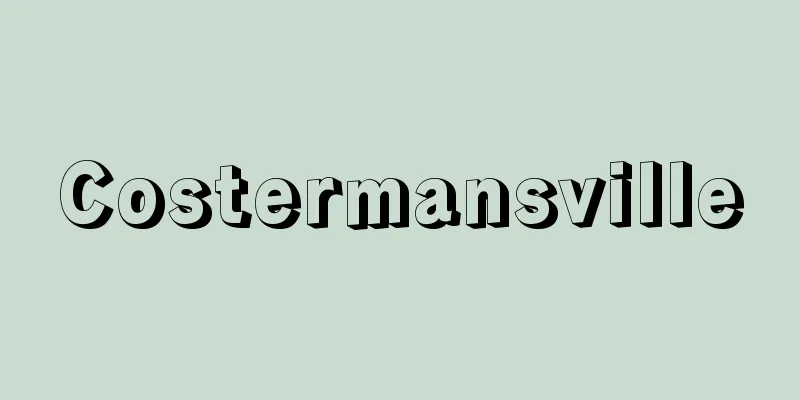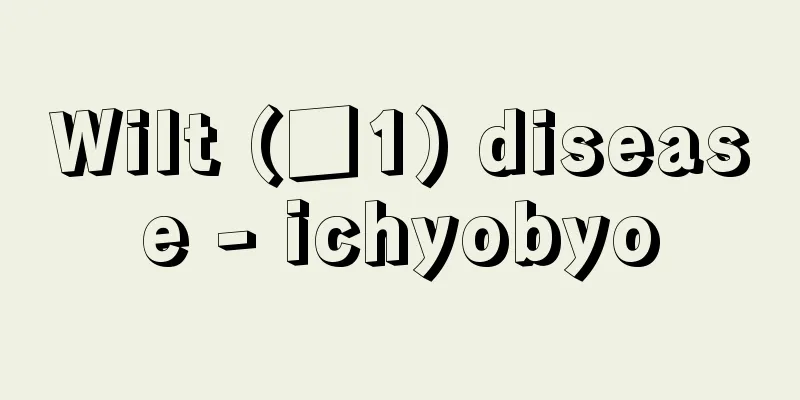Danzaemon

|
During the Edo period, this was the title given to the successive eta chiefs who ruled over the eta, hinin, and monkey keepers in an area spanning 12 provinces, including most of the Kanto region and parts of Kai, Izu, Suruga, and Mutsu. The feudal classes in the Edo period, which played a role in maintaining and strengthening the social order under the rule of the samurai, included the samurai (ruling class) and the farmers, artisans, and merchants (commoner class). The eta, along with the hinin, were of a lower class below the commoner class and suffered severe discrimination. In 1722 (Kyoho 7), Danzaemon won a dispute over the hinin chief Kuruma Zenshichi, who claimed that he was not under the control of an eta chief, and thus temporarily established control over the hinin chiefs in Edo, and also gained control of the right to punish hinin. These facts show that a system of control over the outcasts in the Kanto region and elsewhere was established with Danzaemon at the apex. Danzaemon was ordered to provide taiko drums, leather crafts, wicks, and other items to the shogunate, as well as to provide guards for the shogun when he traveled, and laborers to escort criminals and execute people, which he assigned to his eta and hinin subordinates. He collected taxes from his subordinates, who engaged in small-scale farming, leather tanning, wick manufacturing, and other activities, and from hinin through their head hinin. His economic power was said to be on the level of a 3,000 koku hatamoto (samurai vassal) and he had a large mansion in the northern suburbs of Edo. According to a written record from 1800 (Kansei 12), 5,664 eta households, 1,995 hinin households, and 61 monkey houses were under his direct and indirect control. [Eiju Narusawa] "Buraku History: Eastern Japan" (1983), edited and published by the Buraku Problem Research Institute [Reference items] | |Source: Shogakukan Encyclopedia Nipponica About Encyclopedia Nipponica Information | Legend |
|
江戸時代、関(かん)八州の大半および甲斐(かい)・伊豆・駿河(するが)・陸奥(むつ)の一部、あわせて12か国にまたがる地域の穢多(えた)・非人(ひにん)・猿飼(さるかい)を支配した穢多頭(えたがしら)代々の称。武士支配の社会的秩序を維持し強化する役割を果たす江戸時代の封建的身分には士(支配身分)、農工商(平民身分)などがあった。穢多は、非人とともに、平民身分の下におかれた賤民(せんみん)身分で、厳しい差別を受けた。弾左衛門は、1722年(享保7)、非人頭車善七(くるまぜんしち)が穢多頭の配下ではないと主張しておこった争論に勝訴、江戸の非人頭に対する支配権をいちおう確立し、非人を刑罰に処する仕置(しおき)権も掌握することとなった。これらの事実は、関八州などにおける弾左衛門を頂点とする賤民支配体系が整備されたことを示す。弾左衛門は、役として、太鼓(たいこ)、皮細工、灯心などを幕府に上納したほか、将軍が旅行する際の警護、罪人護送や処刑の人足などを出すよう命じられ、これを配下の穢多・非人に割り当てた。彼は、零細な農耕のほか、皮鞣(かわなめ)しや灯心製造などに従事する配下の穢多や、非人頭を通じて非人から徴税し、その経済的実力は3000石の旗本級といわれ、江戸北郊に大邸宅を構えていた。1800年(寛政12)の書上(かきあげ)では、穢多5664軒、非人1995軒、猿飼61軒が彼の直接間接の支配下にあった。 [成澤榮壽] 『部落問題研究所編・刊『部落の歴史 東日本篇』(1983)』 [参照項目] | |出典 小学館 日本大百科全書(ニッポニカ)日本大百科全書(ニッポニカ)について 情報 | 凡例 |
>>: Exploration - Tansa (English spelling) exploration
Recommend
Aogiri (Chinese parasol tree) - Aogiri (English spelling)
A deciduous medium-sized tree of the Sterculiaceae...
Bunzo Otani
…(2) The second generation (1717-57, 2nd year of ...
Calcium Cyanamide
CaCN 2 (80.10). It is obtained by igniting calciu...
Supersaturation - Kahouwa (English spelling) supersaturation
This refers to a state in which the excess amount...
Tokiwazu Forest Middle School
He was a Tokiwazu-bushi tayu (a chanter for Tokiw...
Grammage - Tsubo-ryo
The weight of paper per unit area. Usually refers ...
Remission
A state in which some or all of the symptoms and ...
Kediri (English spelling)
A city in the Java Timur Province in eastern Java,...
Horse-borrower
A transportation business using horseback that wa...
Kaneko Totodokegumo - Kaneko Totodokegumo
…A general term for spiders belonging to the Antr...
Cartridge (record) - Cartridge
...The phonograph was the entire playback device,...
Hekatompylos
It was the capital of the Parthian Kingdom, and it...
Notsu [town] - Notsu
An old town in Ono County, southeastern Oita Prefe...
River God - Kahaku
〘Noun〙① River god. God who protects rivers. Kahaku...
British Royal Family
...His influence is evident in the works of Bix B...









